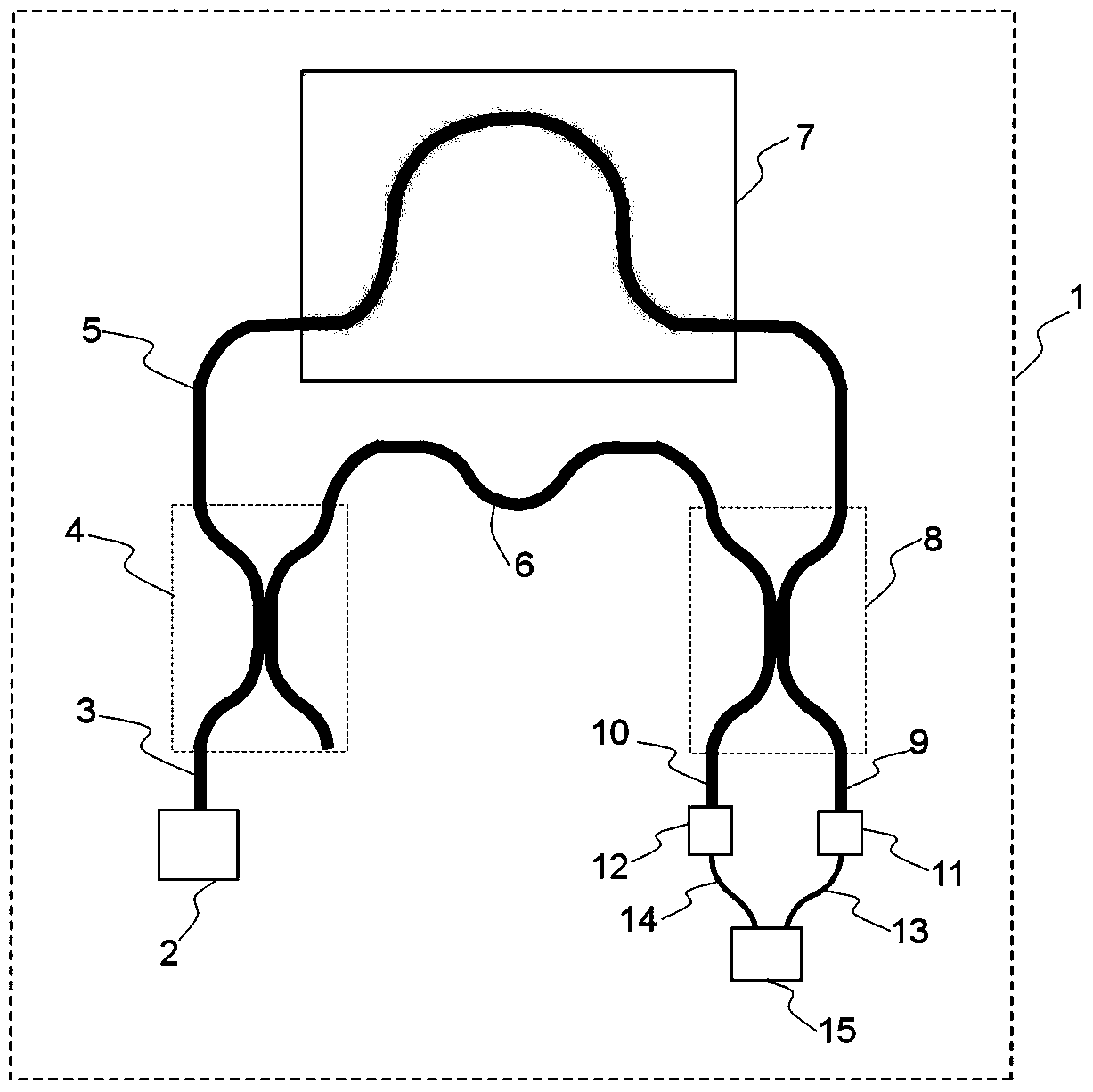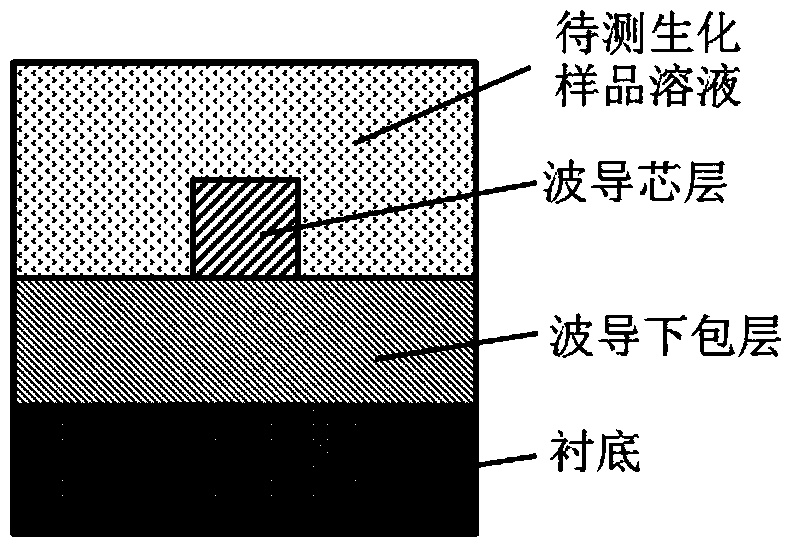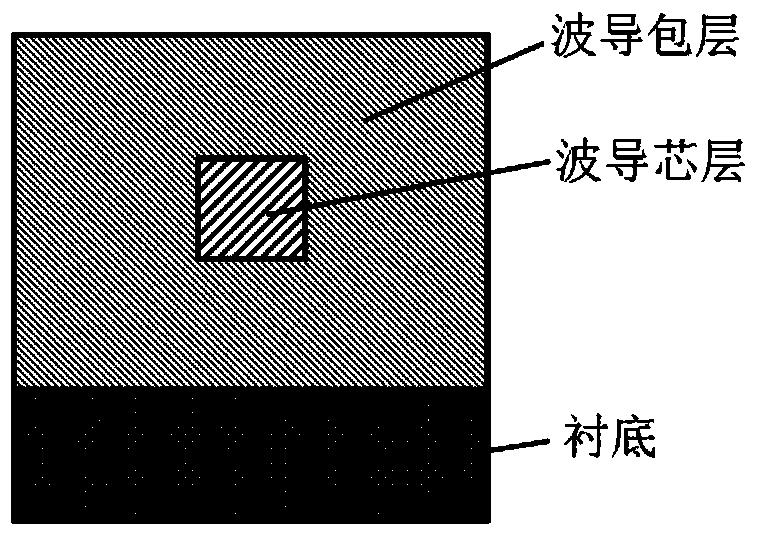Integrated waveguide optical biochemical sensor based on luminous power specific value demodulation
A biochemical sensor and integrated waveguide technology, applied in the field of optical sensing, can solve the problems of high cost, complex sensing demodulation system, etc., and achieve the effects of low cost, high sensing detection resolution, and simple data processing.
- Summary
- Abstract
- Description
- Claims
- Application Information
AI Technical Summary
Problems solved by technology
Method used
Image
Examples
Embodiment Construction
[0032] The present invention will be described in detail below in conjunction with the accompanying drawings and embodiments.
[0033] Such as figure 1As shown, the integrated waveguide optical biochemical sensor for optical power ratio demodulation of the present invention includes an optical waveguide, a sensing cell, a laser, a photodetector, a connection circuit and a data acquisition and processing circuit, and the optical waveguide can be polymer, silicon dioxide, It is composed of optical waveguide materials such as silicon, silicon nitride, or semiconductor; lasers, photodetectors, and data acquisition and processing circuits are integrated on the same substrate with optical waveguide circuits using photoelectric hybrid integration technology to form an integrated optical biochemical sensor.
[0034] The laser outputs a single-wavelength light wave (power P 0 , the wavelength is λ) enters the first optical waveguide directional coupler through the first straight optic...
PUM
 Login to View More
Login to View More Abstract
Description
Claims
Application Information
 Login to View More
Login to View More - R&D
- Intellectual Property
- Life Sciences
- Materials
- Tech Scout
- Unparalleled Data Quality
- Higher Quality Content
- 60% Fewer Hallucinations
Browse by: Latest US Patents, China's latest patents, Technical Efficacy Thesaurus, Application Domain, Technology Topic, Popular Technical Reports.
© 2025 PatSnap. All rights reserved.Legal|Privacy policy|Modern Slavery Act Transparency Statement|Sitemap|About US| Contact US: help@patsnap.com



